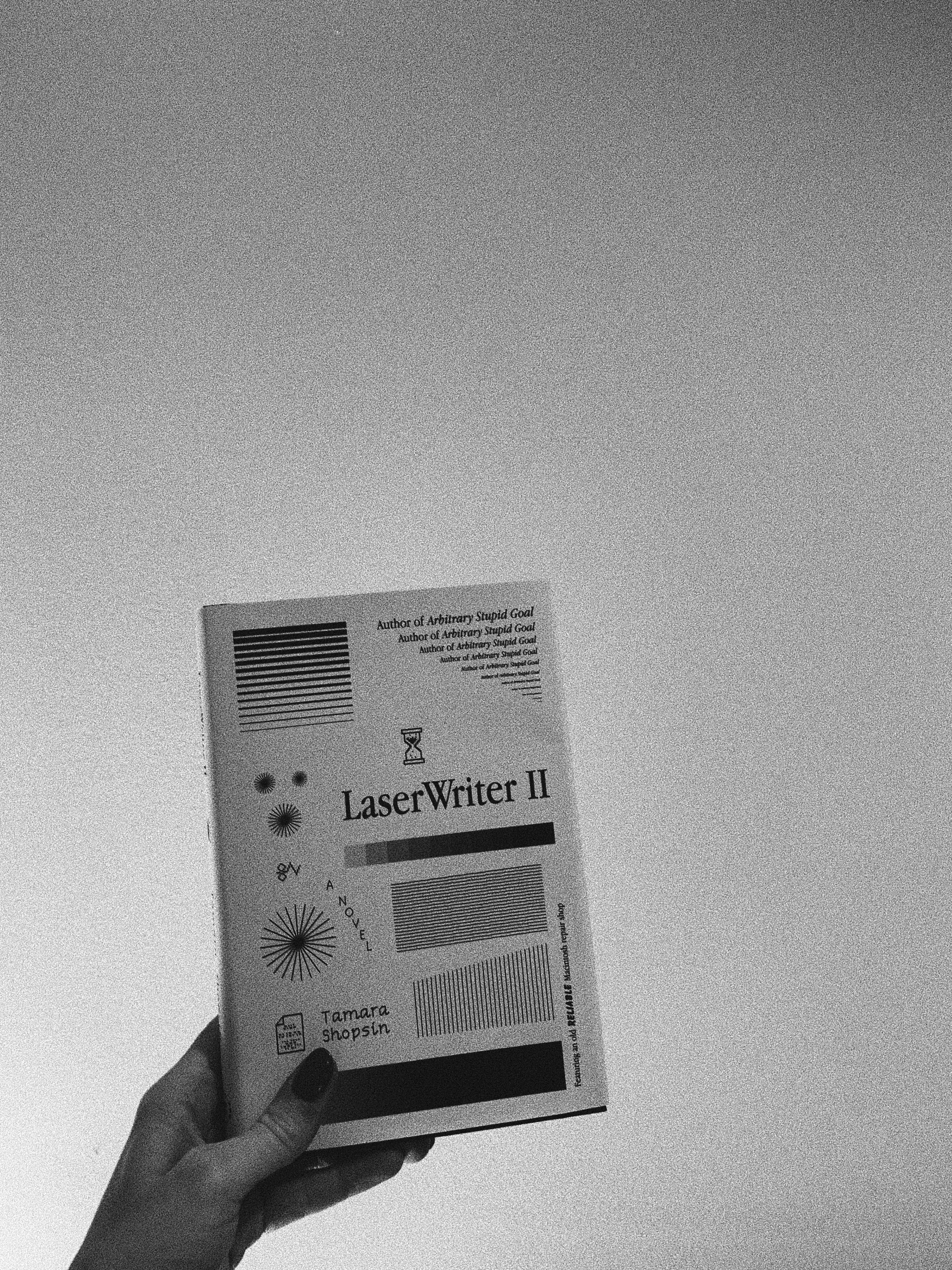Laser Writer II by Tamara Shopsin is a love letter to the analog, and by analog I mean the millennial analog: the era between behemoth desktop computers and the iCloud. It follows the daily mundane happenings of Tekserve, a New York City Macintosh repair shop. Claire gets a job there to serve her love of technology even though she has no repair shop experience. She just loves computers. With the glimmer of a fable or folktale that Steve Jobs might tell, Laser Writer II is airtight with technical language about printers and computers while telling the true story of a humble tech support shop on 23rd street.
My feelings about this book are pretty static. I underlined one lone sentence in all 202 pages. It is more of a time capsule than a novel. It has no deep conflict. The characters are forgettable. The types of machines, unimportant. But the story itself is a microcosm of what it felt like to be part of Apple’s brave new world in the nineties and early aughts. The computer was entering its adolescent age, its humans responsible for regular checkups and emergency doctor visits: you had to be vigilant about your hardware so that it stayed healthy. In LaserWriter II, computers aren’t quite autonomous yet, but are nevertheless personified:
The P-ram is zapped. Which is code for resetting the RAM, the part of the computer that stores its core character — the sounds it makes, its preferences, its conception of time, its habits good and bad.
The quintessential ‘repair shop’ brings to mind a specific atmosphere, where one might not recall any bombastic physical detail but will be immersed in the feeling of delicate hope or despair while standing in line, computer in arms, surrounded by the tense silence of other customers hoping to recover their machines as well. Tekserve’s employees are described in much the way you might expect a tech support staff to be: a vaguely bro-y, definitely nerdy, ragtag crew. Relationships feel very workplace-y and conversations, tedious.
The charm of this book for me, though, is that it’s a consummation of spirit for where the digital meets the creative. I was drawn to it mostly because it represents love — love for the medium of digitality. Tamara Shopsin is, by day, a designer and illustrator (The New Yorker, The Atlantic, The New York Times). She designed the book jacket for this book and its chapter icons. The acknowledgements urge its readers to go back up their data right now. Twice. She even has a page on her professional website that honors the era of early computers by making you wait in line (until loading) until your ticket is called, which I found when checking the aforementioned publications.
(please go explore it after you finish reading this review)
Each part of the published product has her voice in it. It is a translation of personal expression, and while it didn’t really serve me imaginatively, it represented the full ownership and stewardship of one’s creativity. The book itself is not a masterpiece, but the endearing details that it extends outside its own world subvert my thoughts and feelings on its overall appeal: delightful.

